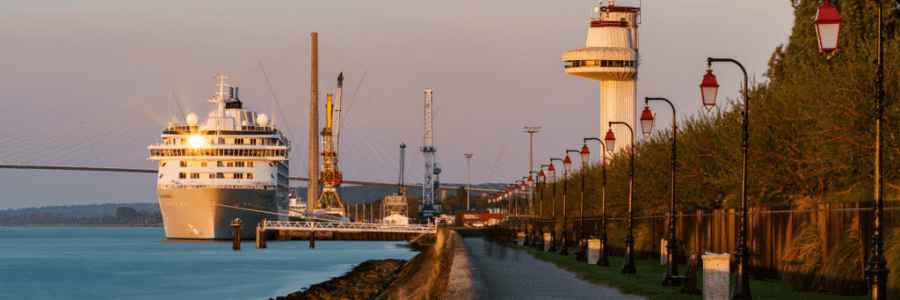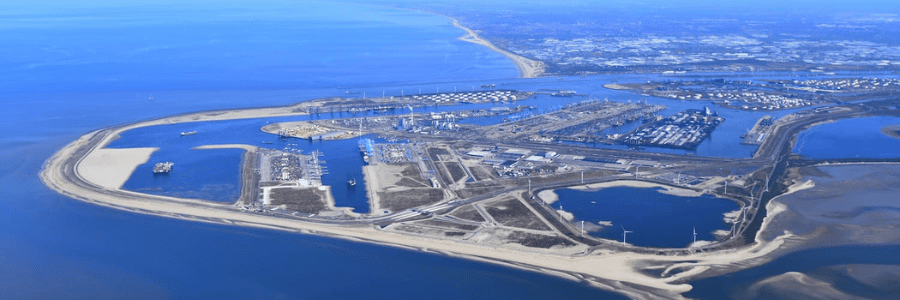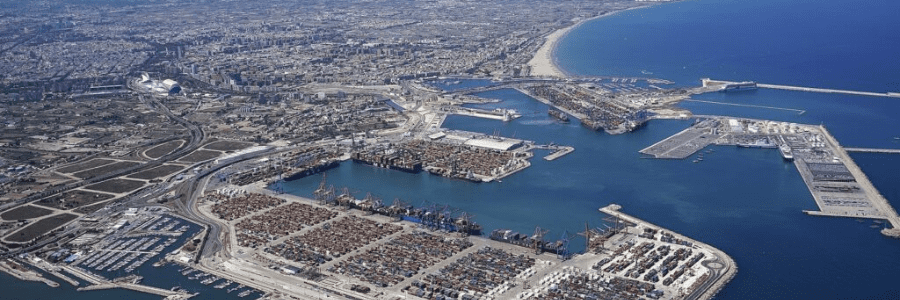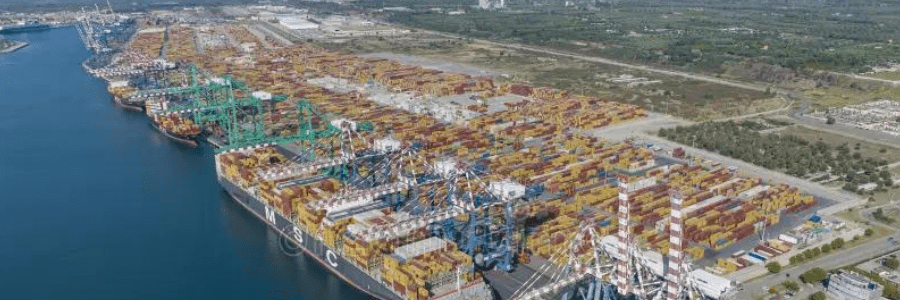
Europe’s coastline throbs with maritime activity, with countless ports serving as bustling gateways for trade, tourism, and economic prosperity. But which ports reign supreme in this continent teeming with maritime giants? Buckle up, as we embark on a thrilling voyage to explore the Top 10 European Ports, delving into their unique strengths, container traffic, global connections, and fascinating histories.
1. Port of Rotterdam: King of Containers
- Location: Rotterdam, Netherlands
- Containers: 14.8 million TEU annually, ranking 1st in Europe and 4th globally.
- Connections: Extensive network across Europe, Asia, and beyond. Major hub for containerized cargo, including chemicals, machinery, and energy products.
- Uniqueness: Cutting-edge infrastructure, strategic location at the mouth of the Rhine River, focus on innovation and sustainability.
- Did you know: Rotterdam boasts the world’s largest automated container terminal, showcasing its commitment to efficiency and technology.
2. Port of Antwerp: Diamond in the Rough
- Location: Antwerp, Belgium
- Containers: 13.5 million TEU annually, ranking 2nd in Europe.
- Connections: Vital link for Northern Europe trade, especially with the UK and Germany. Major hub for diamonds, chemicals, and vehicles.
- Uniqueness: Home to the world’s largest diamond trading center, boasts specialized container terminals for various cargo types.
- Historical gem: Antwerp’s maritime history dates back to the 2nd century, making it a city steeped in trade and cultural exchange.
3. Port of Hamburg: Gateway to Germany
- Location: Hamburg, Germany
- Containers: 8.3 million TEU annually, ranking 3rd in Europe.
- Connections: Important link for Central and Eastern European trade. Handles diverse cargo like coffee, cars, and machinery.
- Uniqueness: Largest universal port in Germany, specializing in breakbulk and project cargo. Rich cultural heritage with renowned Speicherstadt warehouse district.
- Local flavor: Hamburg boasts a vibrant harbor area with stunning maritime museums and lively restaurants.
4. Port of Valencia: Spanish Sun and Containers
- Location: Valencia, Spain
- Containers: 5.4 million TEU annually, ranking 1st in Spain and 2nd in the Mediterranean.
- Connections: Extensive network across Europe, Asia, and Africa. Key hub for consumer goods, chemicals, and vehicles.
- Uniqueness: Commitment to sustainability initiatives, strategic location on the Mediterranean, modern infrastructure.
- Historical charm: Valencia’s port played a crucial role in its development, evidenced by its historic Lonja de la Seda (Silk Exchange).
5. Port of Piraeus: Greek Gateway to the East
- Location: Piraeus, Greece
- Containers: 5 million TEU annually, ranking 1st in Greece and 5th in the Mediterranean.
- Connections: Growing hub for East-West trade, connecting Europe with Asia via the Suez Canal. Handles diverse cargo like containers, cruise ships, and vehicles.
- Uniqueness: Investment in infrastructure and technology, strategic location for East-West trade, expanding cruise ship industry.
- Mythological connection: Legend has it that Piraeus was the port from which Theseus sailed to defeat the Minotaur, adding a touch of mythical intrigue.
6. Port of Algeciras: Gateway to the Atlantic:
- Location: Algeciras, Spain
- Gross tonnage: Over 100 million tons annually, ranking 1st in Spain.
- Connections: Vital transhipment hub for Europe-Africa-Asia trade, specializing in non-containerized cargo like liquid bulk and vehicles.
- Uniqueness: Strategic location at the Strait of Gibraltar, diverse cargo handling capabilities, modern infrastructure for efficient transhipment.
- Did you know: Algeciras boasts the world’s largest bunker fuel storage facility, catering to the needs of passing ships.
7. Port of Bremerhaven: German Powerhouse:
- Location: Bremerhaven, Germany
- Containers: 4.6 million TEU annually.
- Connections: Important link for North Sea trade, specializing in containerized cargo and offshore wind energy logistics.
- Uniqueness: Home to the largest car import terminal in Europe, strong focus on sustainability and innovation in offshore wind sector.
- Maritime heritage: Bremerhaven’s history dates back to the 13th century, with its harbor museum showcasing its rich maritime past.
8. Port of Barcelona: Cruise Capital and Beyond:
- Location: Barcelona, Spain
- Containers: 3.1 million TEU annually.
- Connections: Renowned cruise ship destination, also handles significant container and vehicle traffic. Key link for Mediterranean trade.
- Uniqueness: Blend of tourism, trade, and logistics with a focus on innovation and sustainability. Home to world-class cruise terminals and container facilities.
- Cultural hub: Barcelona’s vibrant city life spills over into its port, offering visitors cultural experiences alongside maritime marvels.
9. Port of Gioia Tauro: Italian Giant:
- Location: Gioia Tauro, Italy
- Containers: 3.4 million TEU annually.
- Connections: Growing hub for Mediterranean-East Asia trade, specializing in transhipment of containerized cargo.
- Uniqueness: Modern infrastructure, strategic location, focus on efficiency and automation in container handling.
- Development hub: The port plays a crucial role in the economic development of southern Italy, attracting investments and creating jobs.
10. HAROPA Port: French Alliance:
- Location: Le Havre, Rouen, and Paris (France)
- Containers: 3.1 million TEU annually (combined).
- Connections: Network of three ports along the Seine River, connecting Northern Europe with inland France. Diverse cargo handling, including containers, bulk, and cruise ships.
- Uniqueness: Collaboration between three major French ports, offering integrated logistics solutions and efficient inland connections.
- Historical significance: Each port boasts a rich history, with Le Havre’s iconic Pont de Normandie bridge adding a modern touch.













